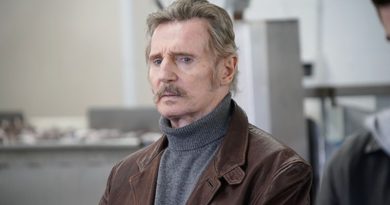The Imaginary (2024) Review: A Visually Captivating Animated Fantasy-Adventure
The Imaginary is what John Krasinski’s IF should have achieved the most: a visual treat that feels wholly immersive and magical about the boundless power of imagination. Based on A.F. Harrold’s 2014 novel of the same name, The Imaginary marks Studio Ponoc’s second feature-length animated film since Mary and the Witch’s Flower in 2017. Directed by Yoshiyuki Momose, a veteran animator from the renowned Studio Ghibli, whose notable works include Grave of the Fireflies, Spirited Away and Tales from Earthsea, knows a thing or two about making a 2D animated fantasy-adventure that evokes the look and feel of Ghibli-esque style.
The hand-drawn, painterly animation looks stunning from the minute the movie introduces the young girl Amanda (voiced by Rio Suzuki) and her imaginary blond boy, Rudger — pronounced “Rud-ger”, not “Roger” — (Kokoro Terada). The opening scene begins with Rudger’s voiceover narration, one of which includes “Have you ever seen anything so wonderful?” before the scene transports us into the fantastical world through the child’s imagination. Glittering stars form the hills and mountains, wondrous sights of a dinosaur roaming the Earth and a floating castle in the sky, just to name a few. There’s a majestic scene of Amanda and Rudger riding a bird as they fly happily across the ocean-blue sky. All this in the first four minutes of the pre-title opening set-piece, showcasing Momose’s impressive visual flair.
Amanda loves to spend time back home after school imagining things she and Rudger embark on an “adventure” together. Her widowed mum, Lizzie (Sakura Ando) runs a bookstore downstairs and one day, a mysterious man in a Hawaiian shirt who goes by the name of Mr Bunting (Issey Ogata) shows up to do surveys about today’s children’s behaviours. However, his actual motive is to hunt down imaginary beings (yes, he can sniff them out with his sensitive nose). He has an imaginary being of his own in the form of a long, black-haired Gothic girl who looks like she’s straight out of J-horror accompanying him. Both Mr Bunting and the girl notice Rudger, making it their mission to get him at all costs.
Then something happens, leaving Rudger on his own as the rest of the movie follows him confronting uncertainty. This leads to an interesting question: What happens to imaginary friends when owners forget them regardless of the situation? While IF did explore that angle, Momose does a better job embracing and most of all, expanding the concept of the aforementioned what-if scenario. This allows him to fill in plenty of whimsical moments including the colourful introductions of other imaginary beings (referred to as “Imaginaries”). Among them are the crimson-haired Emily (Riisa Naka) and the talking cat Jinzan (Takayuki Yamada) with red and blue eyes.
An exposition scenario revolving around how the imaginary world works on the other side after one has been forgotten is inevitable. But at least Momose doesn’t get heavy-handed with the details. The movie keeps me fascinated with its consistently entertaining imaginary world. At one point, there’s a scene of Rudger and Imaginaries entering one of the kids’ imaginations. Momose adds high-stakes moments of Rudger facing the villainous Mr Bunting and the girl and isn’t afraid to address matter-of-fact consequences related to terror and death.
The movie’s underlying theme of grappling with heartbreak and loss, particularly Amanda’s father’s death which resulted in the young child embracing her own imagination to process grief, doesn’t resonate deeply as I thought. The Imaginary may lack the emotional depth that Studio Ghibli did well in some of its best animated features. But overall, it remains a highly watchable animated feature blessed with a superb voice cast (both original Japanese and English dubbed versions sound just as great) and enough entrancing visuals.
The Imaginary is currently streaming on Netflix.





